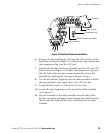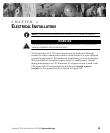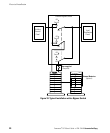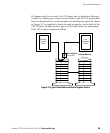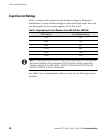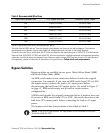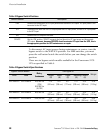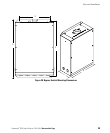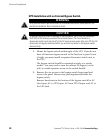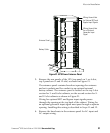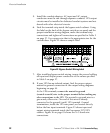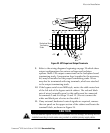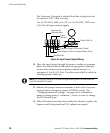
Electrical Installation
27
Powerware
®
9170 User's Guide S LTM-1344 B Uncontrolled Copy
Table 2. Recommended Wire Sizes
Input Circuit Breaker Size 75°C Copper Wire Size Conductor Screw Torque
25A 10 AWG (5.3 mm
2
) 20 in lb (2.3 Nm)
40A 8 AWG (8.4 mm
2
) 25 in lb (2.8 Nm)
60A 4 AWG (21.2 mm
2
) 35 in lb (4.0 Nm)
80A 3 AWG (26.7 mm
2
) 45 in lb (5.1 Nm)
100A 2 AWG (42.1 mm
2
) 55 in lb (6.2 Nm)
125A 1/0 AWG (53.5 mm
2
) 65 in lb (7.3 Nm)
FOR U.S. INSTALLATIONS, READ THIS IMPORTANT NOTE!
This table lists the AWG and mm
2
wire size for each circuit breaker size shown on the wiring diagrams. The minimum
recommended circuit breaker sizes for each model and voltage application are listed on the wiring diagrams.
Conductor sizes shall be no smaller than the 75°C wire size based on the ampacities given in Table 310ć16 of the National
Electrical Code, ANSI/NFPA 70-1999, and article 220. All circuit conductors, including the neutral and equipment grounding
conductors, must be the same size (ampacity) wire. Code may require a larger AWG size than shown in this table because
of temperature, number of conductors in the conduit, or long service runs. Follow local code requirements.
Bypass Switches
Bypass switches are available in two types: Make-Before-Break (MBB)
and Break-Before-Make (BBM).
An MBB switch makes a new connection before it breaks the original
connection. For example, if you turn an MBB switch from UPS to LINE,
the bypass switch connects the load to AC input power before
disconnecting the load from UPS output power. (As noted in Figure 37
on page 47, MBB switches may not be used in certain system
configurations.)
A BBM switch breaks the original connection before it makes a new one.
If you turn a BBM switch from UPS to LINE, the switch disconnects the
load from UPS output power before connecting the load to AC input
power.
The bypass switch has four positions as described in Table 3.
NOTE In the UPS or LINE position, AC input power is still connected to the input
terminals inside the UPS.



